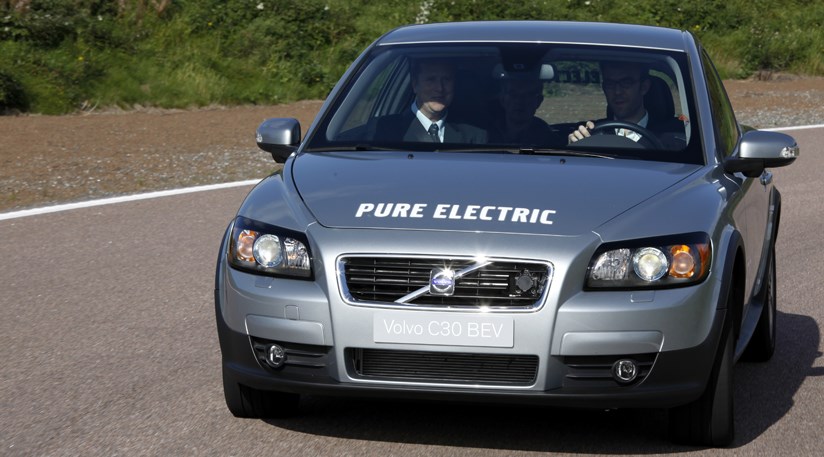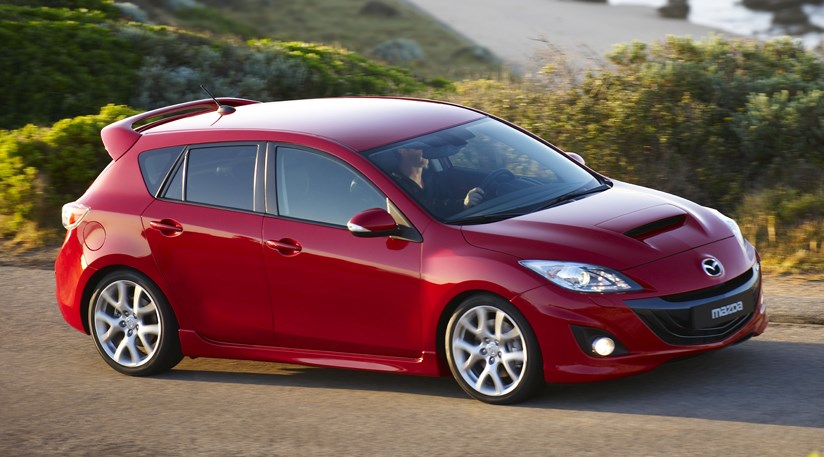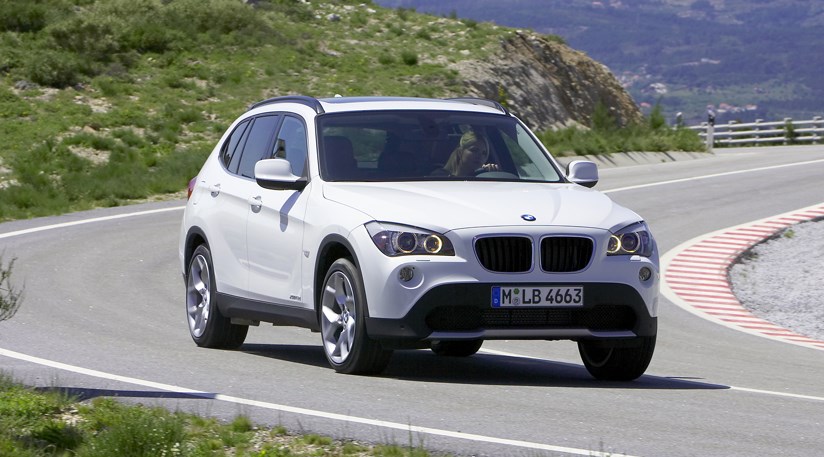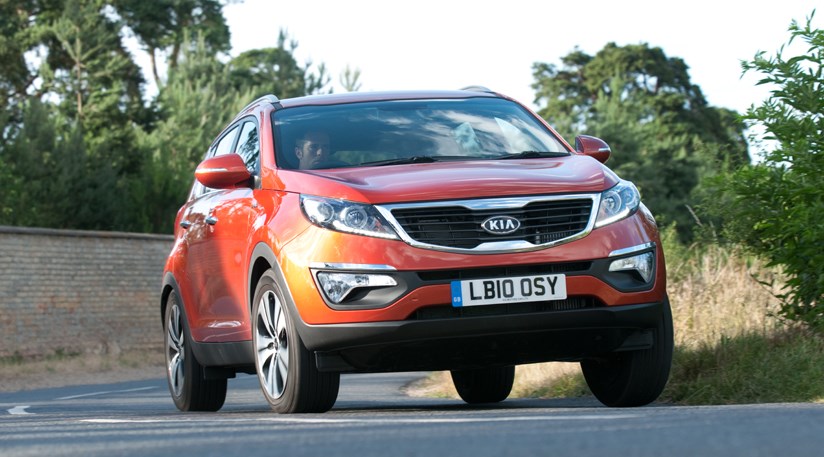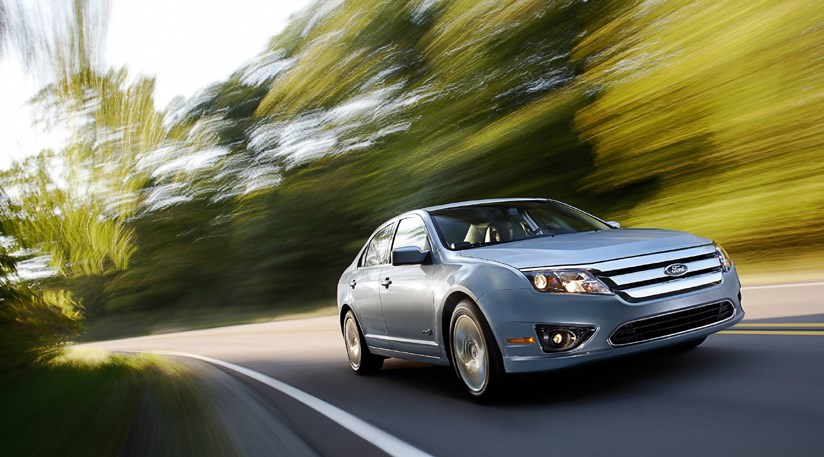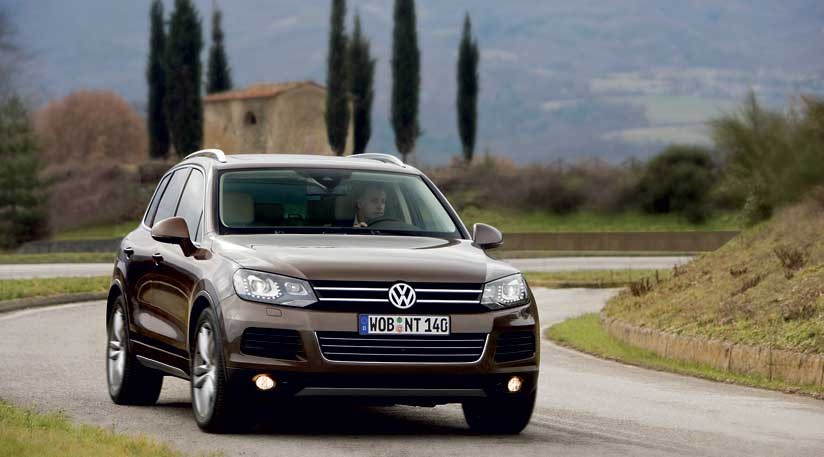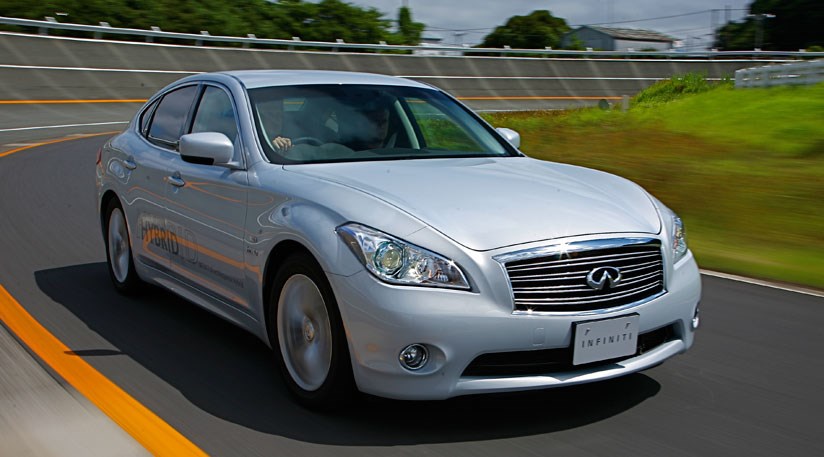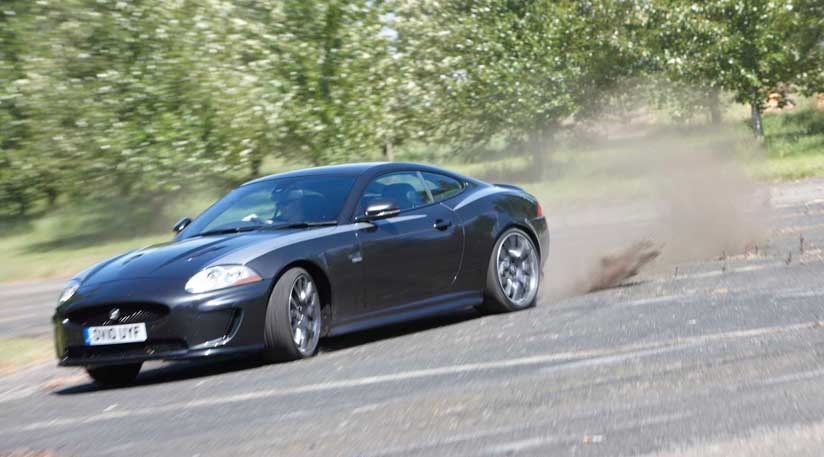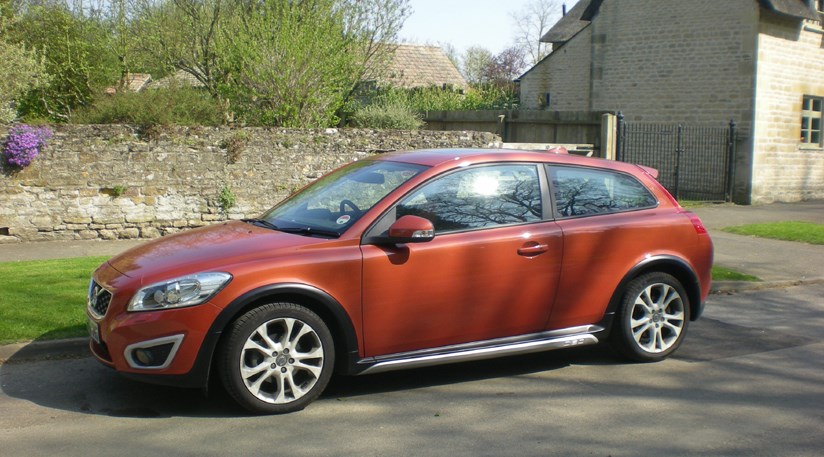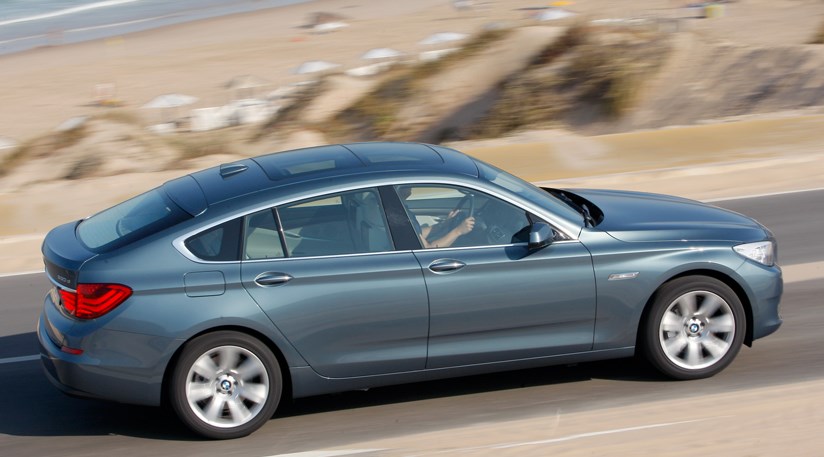
BMW’s pursuit of niches barely visible to the naked eye continues with the 5-series Gran Turismo. Based on 7-series mechanicals and sharing all its gadgets, the 5 GT is a high-roofed hatchback, with lots of space for rear passengers and their luggage. BMW says it mixes the rear legroom of a 7-series with an SUV’s more commanding seating position and additional headroom. Throw in a dash of swooping coupe roofline and the refinement and luxury of a grand tourer and you have the 5-series Gran Turismo. Or a complete dog’s dinner…?
I’m confused. This BMW 5-series GT sounds like a fancy MPV to me…
The 5 GT sales pitch is certainly complicated. Think of it as an MPV the size of Belgium, a rival to Mercedes R-class, an MPV that’s the size of Holland. The BMW is infinitely better looking though. It only has two rows of seats compared with the R-class’s three. This configuration allows for a more swooping roofline, which, coupled with shallower side glass, makes the 5 GT look a lot sexier than the van-like R-class.
The bluff front-end is very imposing. BMW suits deny it’s identical to the new 5-series’s face, ‘though there will be a family resemblance’.
Nominally the Gran Turismo is part of the 5-series family, which means a price around £5000 more than an equivalent saloon’s. The base 530d SE GT costs £40,810, some £13k cheaper than a 7-series.
Under the skin, the GT shares much with that big limousine, including a massive 3.07m-long wheelbase. The suspension design – double wishbone front end, multilink rear with self-levelling air suspension – is shared with the 7 and the next 5. As are the gadgets: adaptive damping (Dynamic Drive Control), faster Integral Active Steering with rear-wheel steering, Head Up Display, Night Vision and a myriad of safety systems.
And the engines?
The 5 GT goes on sale in the UK this October, with a choice of three engines. The 535i runs the blown 3.0-litre petrol six, but BMW has pared the previously twin-turbo unit back to a single twin-scroll turbo, while maintaining peak outputs of 306bhp and 295lb ft. The 535i GT is claimed to manage 31.7mpg and 209g/km of CO2, with a 6.3secs 0-62mph time. The other petrol engine is a 407bhp twin-turbo V8, delivering 25.2mpg, 263g/km and 0-62mph in 5.5sec. Both cars are limited to 155mph.We drove the 530d GT, running BMW’s highly evolved 3.0-litre diesel six now producing 245bhp. Press the start button and the diesel’s thrum and subtle pulse can barely be noticed above the air-con’s roar. The engine purrs around town, then roars into life when you press the throttle, with nearly 400lb ft kicking in from just 1750rpm. It feels every bit as powerful and punchy as 0-62mph in 6.9secs suggests, although it manages 43.5mpg. That equates to 173g/km of CO2, right in the middle of the company car tax bands, despite the 530d’s top end performance.
